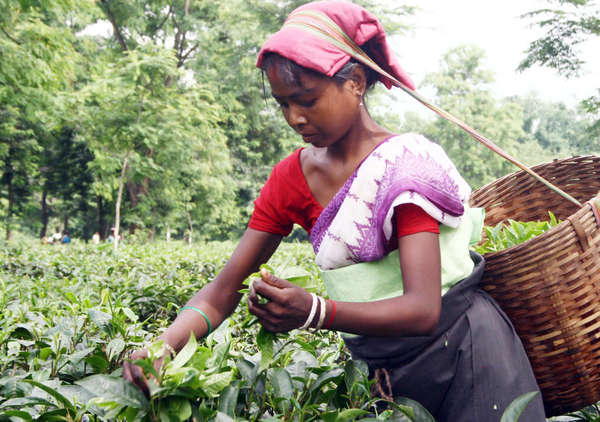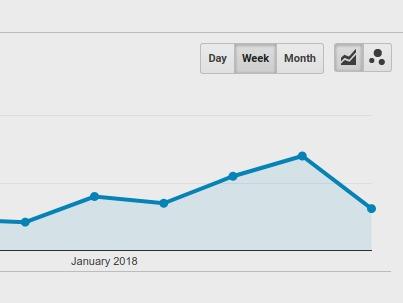Maps, Maps, Maps! Focus on Regions & Single-Origin Teas
Tuesday, February 6th, 2018Clickable map of Chinese provinces; provinces that produce tea or herbs used in herbal tea are highlighted in green.
Our old map on the Region page was not clickable, and the pages on specific regions had only small thumbnail maps in the corner of the page. Many subregions lacked maps entirely.
Now our world map is interactive, with countries that produce tea or herbal tea listed on our site being clickable. If viewed on desktop, hovering your mouse over a country will show its name.
Our pages on China, India, Japan, Sri Lanka (Ceylon), Taiwan, Kenya, South Korea, the United States, and even Indonesia all now have clickable, interactive maps of states, provinces, or prefectures. In some cases, we have even created detailed, original maps for subregions, individual districts or counties of various tea-producing regions. Probably our biggest accomplishment is in Assam, where we now have pages on 18 subdistricts of Assam. To our knowledge we are the only tea website offering this level of detail. Other notable pages include Yunnan and Fujian provinces in China. We plan to add more maps on an ongoing basis, but we already have a core of maps covering most of the more important regions.
Another way we made our site easier to navigate is by tweaking the breadcrumb navigation, those little links at the top of each page, just under the site's header. These links now show the full chain of subregions, for example, the page on Huangshan now shows:
These links both help people see how the different tea-producing regions relate to each other, and can also help people to understand our website and navigate it more easily.
Why is all this important?
There are two main reasons to focus on single-origin teas and learn about where they are produced. One is for yourself, and the other is for the people who produce these teas.For you: deepen your experience of tea
When you try teas from different regions, you both get to sample teas produced in different ways, due to different local techniques and traditions, and you also get to taste the influence of local geographic variability on the tea's flavor. This helps to develop your palate and makes it more likely that you will discover teas you really enjoy. It also helps you to be more informed when reading tea company marketing material, so you can make better buying decisions.We hope that our pages on tea-producing regions can both help you to learn more about the teas you already drink, and locate more of the teas you like most, and buy them for a reasonable price.
 Tea Picker at the Amluckee Tea Estate, Amoni, Nagaon District, Photo © Diganta Talukdar (Flickr), CC BY 2.0.
Tea Picker at the Amluckee Tea Estate, Amoni, Nagaon District, Photo © Diganta Talukdar (Flickr), CC BY 2.0.For tea producers: help them earn a living wage
Single-origin teas provide a powerful way to promote economic prosperity and sustainability in the regions that produce tea. Many of the regions that produce tea, including remote areas of Northeast India and China, and Sri Lanka, are low-wage areas with problems with severe poverty, often associated with human rights abuses as well as environmental issues.When buying blended teas, more of the skill involved in the production of the final product resides with the blender, and thus, a greater portion of the profits from blended teas go to the blenders, most of whom reside in already-wealthy Western countries like the U.S. or U.K.
With single-origin teas, because the tea is associated with the tea garden or a smaller factory in the region of production, a greater portion of the skill influencing the tea's final taste resides with the producer. These teas are thus able to fetch a higher price for the producers, and a greater portion of the price you pay as a tea drinker, reaches the producer.
Tea companies: please list more detail; it benefits everyone!
 Our data shows that people explore deep region pages more when we create interactive maps than if we merely list the regions.
Our data shows that people explore deep region pages more when we create interactive maps than if we merely list the regions.Tea companies have an easy opportunity to benefit from this organization, and from our emphasis on region, by listing more detail for their teas. If a tea is single-origin, rather than just listing a tea with its country of origin, listing it as from the specific province or state is better, and listing it from the specific county or district (if we offer that level of detail) is best.
Whenever we add a tea to our site, we try to list as much detail as possible, but many tea companies do not openly publish as much detail as we now can list. Please get in touch with us if you have additional information about the origin of any teas listed on our site, or if you want us to make any updates or corrections. We are also adding new subregions on an ongoing basis, so if a particular region isn't listed, but you want it to be, let us know!
It's exciting to us when we discover a new region that produces tea, and we hope you can feel excited too, to explore sampling the teas from these different regions!

